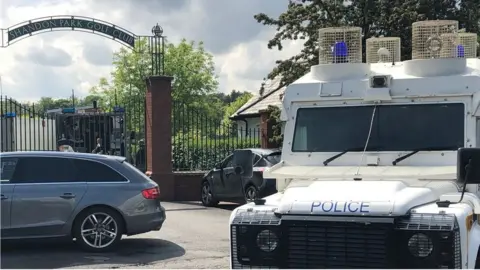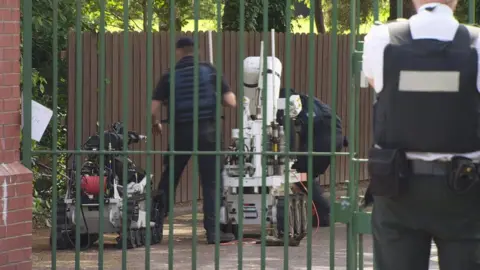Shandon Park: Man acquitted of bid to kill policeman
 BBC
BBCA man who was accused of making a bomb that was planted under a policeman's vehicle in Belfast has been found not guilty of the charges against him.
Peter Granaghan was prosecuted after the device was found under the vehicle at Shandon Park Golf Club in June 2019.
The 42 year old from Blackrock Park in Belleek, County Fermanagh, has been acquitted of attempted murder.
He was also cleared of making and possessing explosives with intent to endanger life.
The non-jury trial at Belfast Crown Court had been told that Mr Granaghan's DNA was detected on a piece of wire found inside the device.
However, the judge ruled that the prosecution had failed to prove beyond reasonable doubt that the defendant had been involved in the construction of the bomb and he acquitted him of all charges.
Defence lawyers had strongly challenged the DNA evidence, arguing that it could not be proven when or how their client's DNA was deposited on to the wire.
'Weak and speculative'
The investigation began on the morning of Saturday, 1 June 2019, when the officer left home and drove his Cherokee Jeep into the car park of the golf club in east Belfast.
After playing a round of golf, he returned to his vehicle and noticed a wooden box attached underneath.
Army technical experts were called and they dealt with an improvised device which was packed with 65 grams of TNT.

Mr Granaghan was arrested more than three months later, in September 2019.
His home was searched at that time, but his defence barrister told told trial that no traces of explosives had been found in his home or shed, or on clothes, tools and other items which were forensically examined.
The defence described the prosecution case as "inherently weak and speculative".
As well as the DNA evidence, the prosecution team had also presented circumstantial evidence which they argued showed Mr Granaghan's support for violent dissident republicanism.
This, the prosecution alleged, included images found on a laptop during a search of his home and associating with known paramilitaries both before and after his arrest.
In his ruling, the judge pointed to expert evidence which confirmed there was a "reasonable possibility" that Mr Granaghan's DNA could have been deposited by "tertiary transfer".
He added: "While the other circumstantial evidence may create the suspicion that the defendant was involved in this incident, no matter how strong the suspicion it's not sufficient to establish proof beyond reasonable doubt.
"It's insufficient to persuade me beyond reasonable doubt that the defendant was involved in the construction or preparation of this device - and accordingly I find the defendant not guilty on each count."
'Far from an exact science'
Speaking outside court, Mr Granaghan's defence solicitor said his client had been exonerated after three years.
"This case focused almost entirely on DNA evidence found on a wire inside an improvised explosive device. DNA is, and has always been, far from an exact science," he said.
"The DNA experts were unequivocal - the DNA alone could not prove that our client touched the item in question. This again indemnifies the inherent flaws in DNA evidence in cases such as these. "
